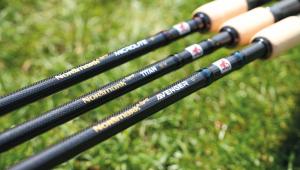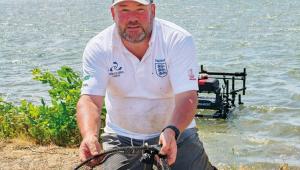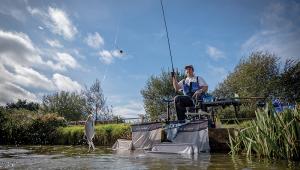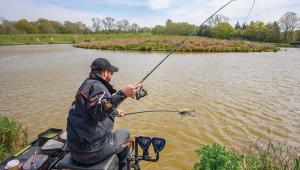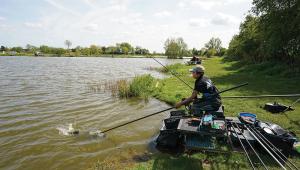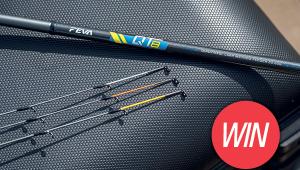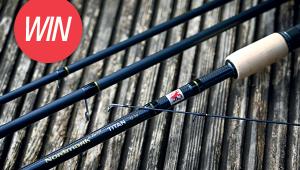PVA Bag Fishing - Darren Cox
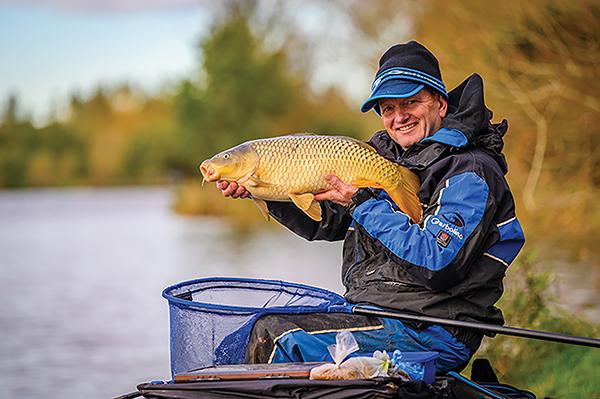
Darren Cox takes an intriguing look into the world of specialist carp fishing and how one of their techniques can be adapted to help you catch more carp in matches.
Fishing on big open waters can be a treacherous game, and you often need a lot of patience and belief. My usual approach for carp involves the good old Hybrid feeder in various sizes depending on weather, fish size and distance. However, over the last few seasons the ‘bomb and bag’ can still be effective all year round. This season it has been working well again on many venues, and in spring it appeared to kick in earlier than normal too.
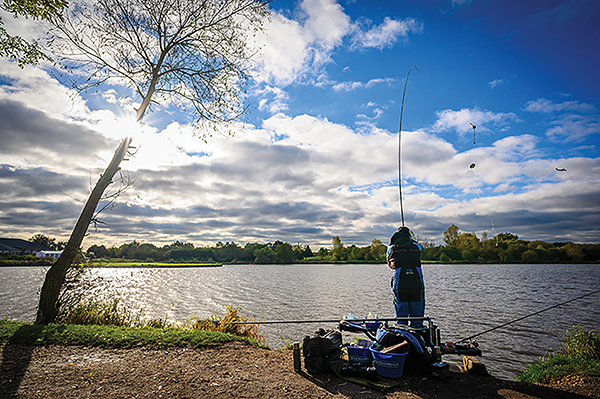
There are many theories as to why the bomb and bag works so well. In my opinion there are several plausible reasons why it would work more effectively over other methods. For me the first one is that I think it can be devastating where the bottom is silty.
A Method or Hybrid feeder can all but disappear in some circumstances, and at Barston Lakes I feel this is most definitely the situation in many areas. Your bait and hook are sitting directly on the feeder, so if it’s silty they go straight into the silt with it! Where fish are feeding ravenously and digging through the silt then it is probably not too much of an issue, although it can still slow down the bite process.
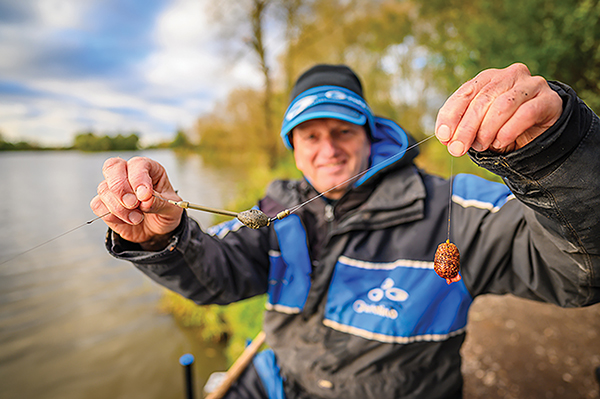
With the correct bomb and bag setup, I feel that the bomb may still sink into the silt; however, the PVA bag with its dry pellet mix inside is definitely more buoyant and less likely to sink anywhere near as far as any feeder. The second, and probably just as important reason, on hard fished waters is that your hook bait and feed are detached from any feeder or lead and sit away from any familiar danger object.
Once the PVA bag melts, all that is left is a small inviting mound of pellets with my hook bait in it. I feel this offers a massive advantage on busy venues where the fish can become very wary.
The final reason I believe it works so well is that I am delivering dry pellets to the lake bed in the bag, which react totally differently to damp pellets. They are a lot more active; they burst out of the bag if it’s made correctly, and certainly waft around very well once released.
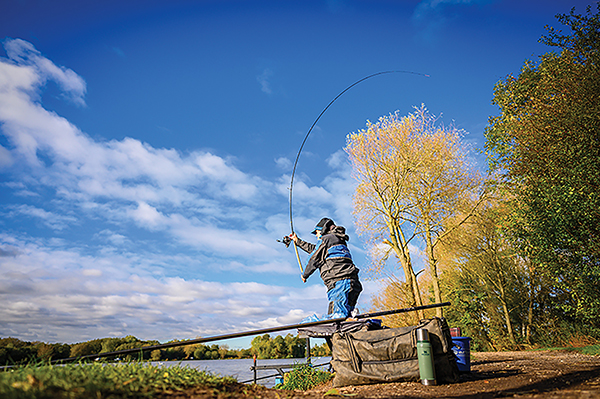
This again is a totally different form of presentation, and realistically the only way to get small amounts of hard pellets to a swim at distance.
The rig is very simple, and the way I use it enables me to switch between an X-Safe feeder or bomb system. I simply tie a loop in the end of my line with a tulip bead, which I draw down over my X-Safe stem. The stem can be attached to a Hybrid, Method or a bomb.
With the bomb I have found a hooklength of around 250mm to 300mm long is ideal. Where big fish are concerned I will normally use a size 12 or size 14 QM1 tied to 0.20mm Garbolino Super Soft mono. The X-Safe stems need to have a quick release attachment on the end so that I can quickly swap hooklengths to get the bag in position while fishing with one.
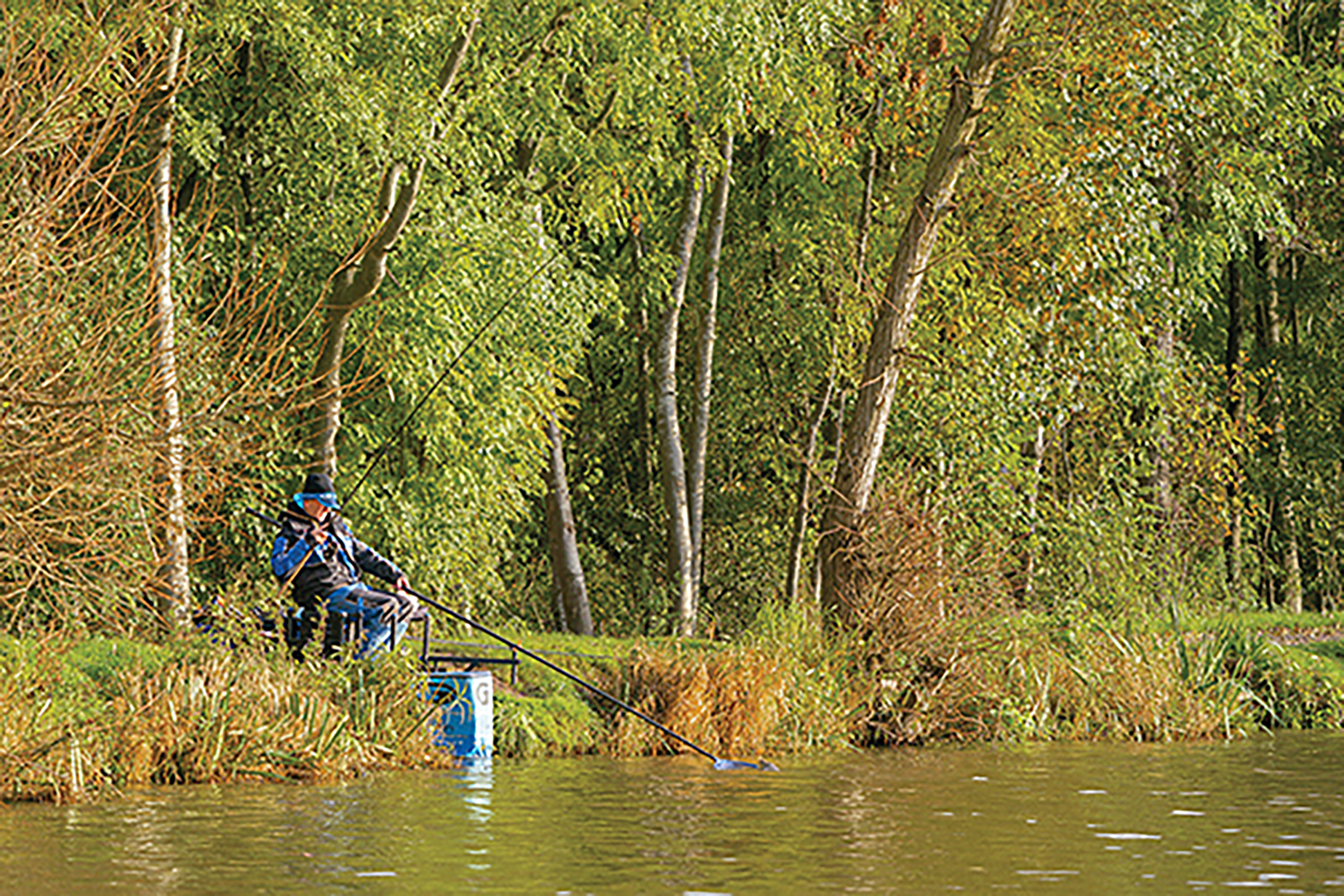
This saves time as well as it means I can soak the bag in PVA friendly liquids if required. I normally do this as it not only gives me added attraction, but also provides a bit of security to cover the PVA and get it out in one piece without dissolving or splitting.
Making a PVA bag is relatively quick and easy to do, but I do like to have plenty prepared, which I do at home and keep in a watertight tub and plastic bag. I use the Guru PVA mesh as it is finer and dissolves quicker than most even in cold water with glug on.
Here’s How I Tie My Bags:
Step 1: Prepare your PVA with a knot in the end ready in the loader and measure out the chosen pellets. I use an old top kit end cap, and use half, full or multiple scoops to give me an accurate measure.
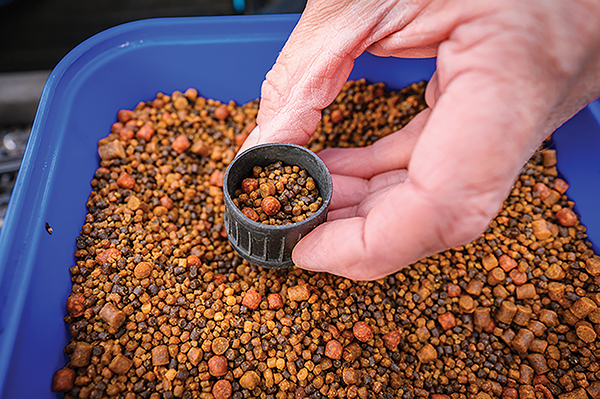
Step2: Push down tight with the plunger and pack them solid. This is important because the tighter you get them the more likely they are to burst out of the mesh as it dissolves.
Step 3: Twist the top of the formed bag around several times so that the bag is packed as tight as possible, and the pellets cannot move in the bag.
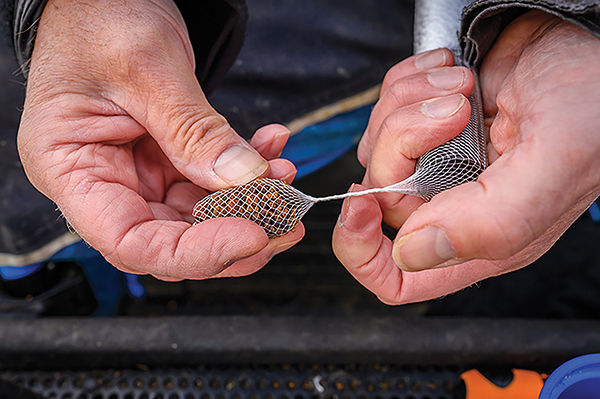
Step 4: Form a single overhand knot in the PVA without losing any tightness in the bag. I like to use a knot picker for this and draw the knot down tight with the picker. It takes a bit of practice but you should be able to get them tight no problem.
Step 5: Before you cut the PVA bag off, tie a new single overhand knot to start off the next one. Then cut the bag off and it’s ready to be threaded on to the hooklength.
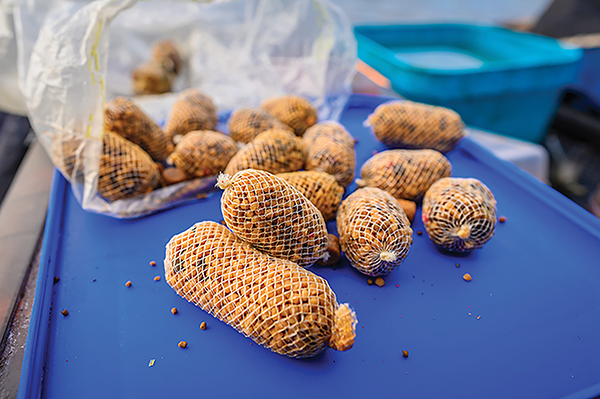
Step 6: Use a long latching needle going in as central to the top knot on the bag as you can, and bring the needle out slightly to one side at the base of the bag but away from the knot. This way there is no chance of the hook getting fast in the PVA knot, which takes longer to dissolve.
Step 7: Get tying! Once you’ve tied a bag crack on and tie a few because you don’t really want to be doing this on the bank. Twenty or so should be enough for most matches at this time of year.
Step 8: Dip the bag in your chosen glug and it’s ready to go for the next cast. I like to have mine attached to another bomb ready to be hooked on in seconds and cast out. You can dip multiple bags ready but in winter I like to dip mine quickly so that they don’t take on as much liquid and break down quicker.
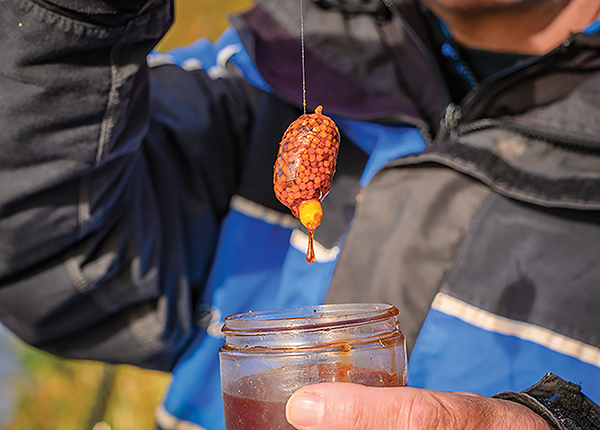
PVA bags are not particularly aerodynamic, so you need to compensate for this by using heavier bombs. On flat calm days a 30g bomb should be plenty to cast up to 50 metres, but when you need to go further or are faced with a strong wind, then a 50g bomb or even bigger is necessary to maintain the accuracy and distance.
I team this up with a 12 or 13ft Garbolino Essential Distance Feeder rod; these are perfect for the job and will cast as far as you need yet still have a lovely fish playing action.
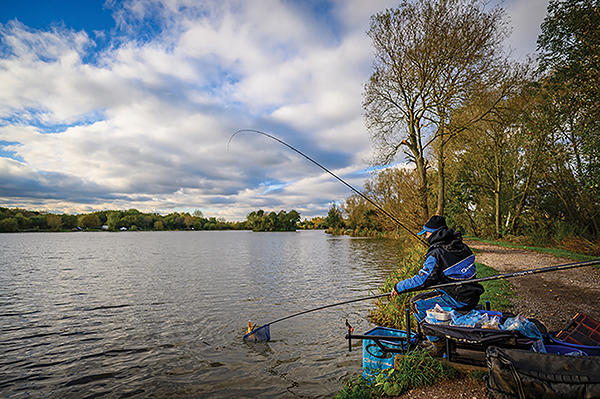
My main line is 6lb and I have eight metres of 12lb shockleader to ensure I can punch the rig as hard as I need for a perfect cast every time. This also helps when playing big fish at the net, as I can put a lot more pressure on them with the heavier line.
Glugging Up
One of the big advantages of a PVA bag is that you can use it so well with glugs and flavours and I have two favourites: Mainline Match Sticky Syrups or Stick Mix Liquids are perfect for glugging your bags. I prefer the Hybrid flavour but have also done well in winter using the Mainline Impact Enhancer in Salty Squid. I have a few glug pots ready to fill with my chosen glug and am happy to chop and change all day to get extra bites.
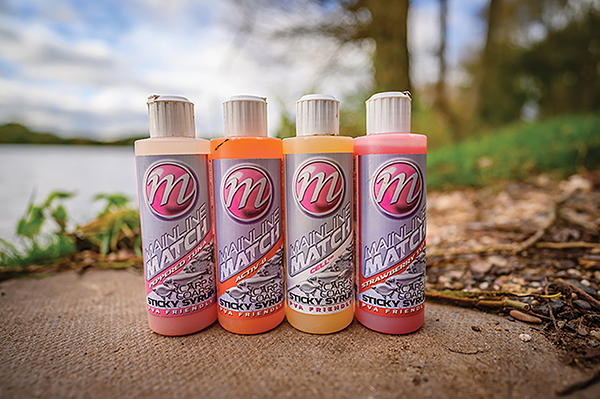
The pellets I am using today are a mixed size of mainly micros with odd 4mm and 6mm sizes in. They are from the Mainline Spod & PVA Pellet Mix and have variable oil contents, which gives them added attraction and different breakdown times. Combined with the glugs you give yourself the best chance of tricking a fish over the feed.
As for hook baits, they are also quite simple. Today I have caught on 6mm and 8mm Mainline Yellow Pineapple Wafters, but I have also caught a couple of fish on Pink Tuna as well as some 6mm Activated Pellets dyed in Red Krill.
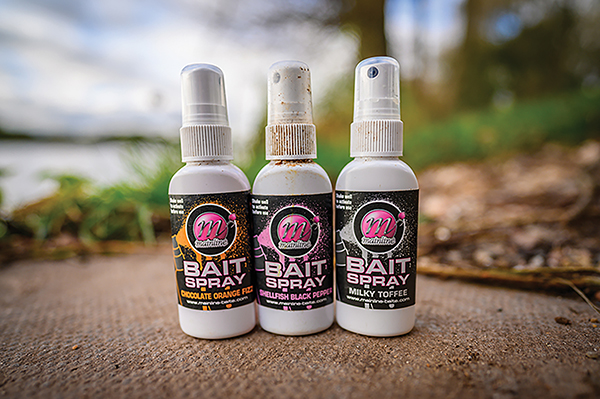
There is a fine balance between trying to get a bite with different smells, flavours or colours and finding the fish. If you know exactly where to fish you can concentrate on that area and try different bait and feed options. If you are in open water, then sometimes you have to find the fish by pushing out further all the time.
Today has not been easy. I started at 60 metres and caught a lovely common around 11lb straightaway, but then had to spend the next few hours pushing out further every few casts to get very odd bites. In the end I started to catch well at around 90 metres.
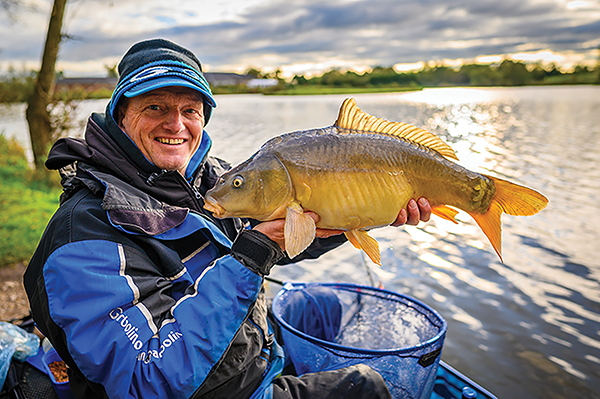
This is normal for Barston when the fish are not really that bothered about eating. However, it keeps you in touch with bites, and you don’t need many to build a big weight. Three bites an hour is 15 fish in a five hour match. Normally at Barston that will give you well over 100lb and a very good chance of some money.
The bomb and bag in no way replaces my Method/Hybrid feeder fishing at any time of year, but it does offer a brilliant alternative when one is required, giving a different form of presentation.
By using this setup you can quickly switch between the techniques with one rod, which makes it even more appealing and maintains accuracy. If you haven’t tried it on the venues you fish, I’m sure you will be pleasantly surprised as it works at so many different venues up and down the country.
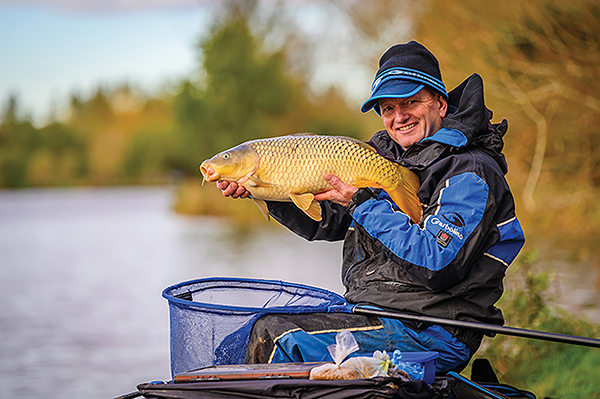
- Log in or register to post comments
